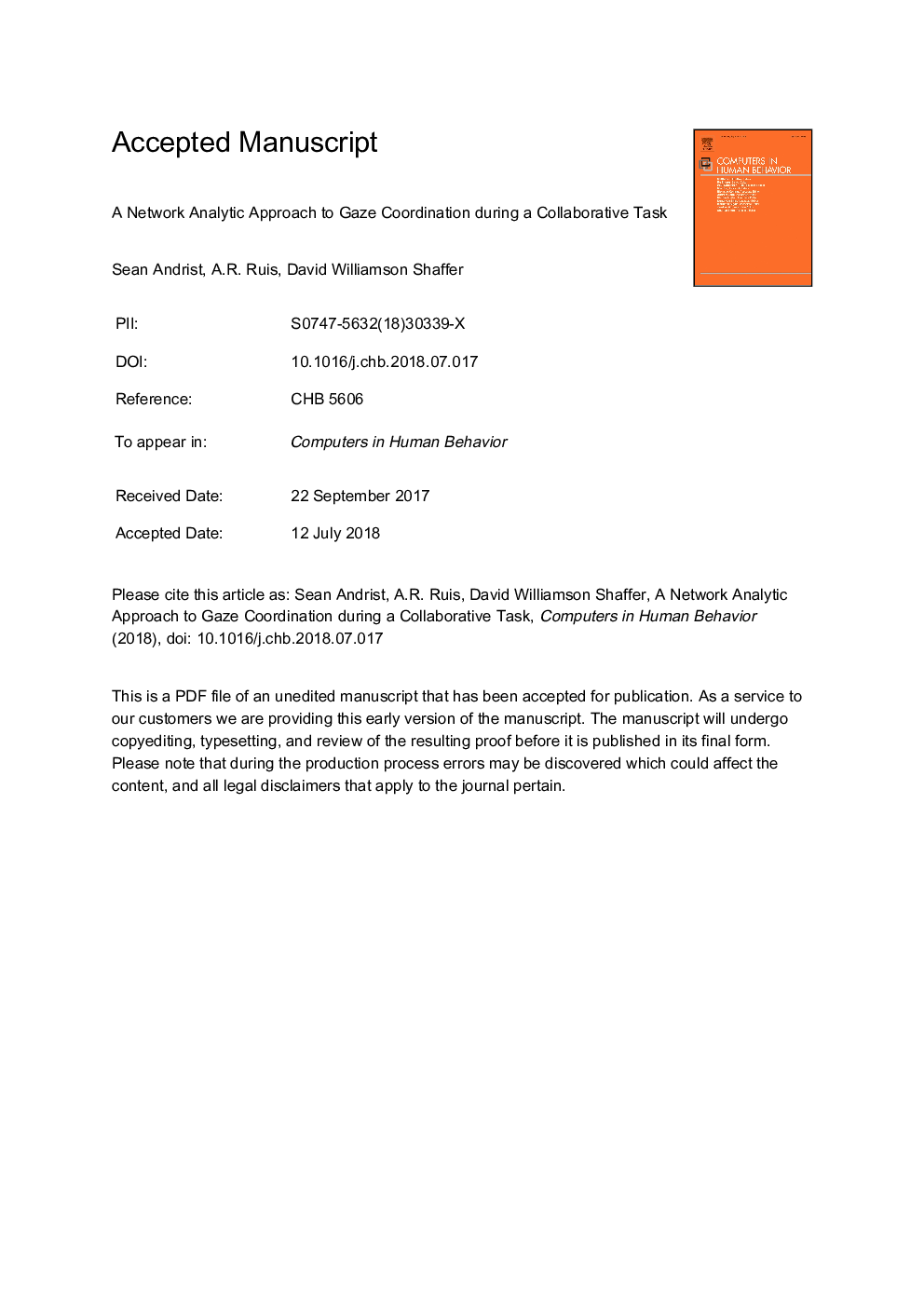| Article ID | Journal | Published Year | Pages | File Type |
|---|---|---|---|---|
| 11512886 | Computers in Human Behavior | 2018 | 29 Pages |
Abstract
A critical component of collaborative learning is the establishment of intersubjectivity, or the construction of mutual understanding. Collaborators coordinate their understanding with one another across various modes of communication, including speech, gesture, posture, and gaze. Given the dynamic, interdependent, and complex nature of coordination, this study sought to develop and test a method for constructing detailed and nuanced models of coordinated referential gaze patterns. In the study, 13 dyads participated in a simple collaborative task. We used dual mobile eye tracking to record each participant's gaze behavior, and we used epistemic network analysis (ENA) to model the gazes of both conversational participants synchronously. In the model, the nodes in the network represent gaze targets for each participant, and the connections between nodes indicate the likelihood of gaze coordination. Our analyses indicate: (a) properties and patterns of how gaze coordination unfolds throughout an interaction sequence; and (b) differences in gaze coordination patterns for interaction sequences that lead to breakdowns and repairs. In addition to contributing to the growing body of knowledge on the coordination of gaze behaviors in collaborative activities, this work suggests that ENA enables more effective modeling of gaze coordination.
Related Topics
Physical Sciences and Engineering
Computer Science
Computer Science Applications
Authors
Sean Andrist, A.R. Ruis, David Williamson Shaffer,
